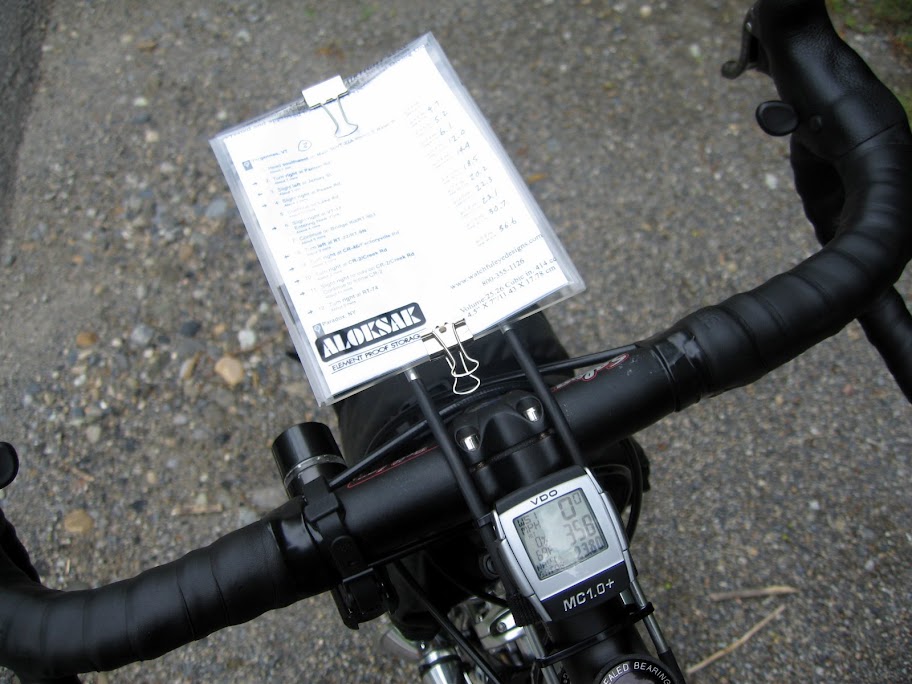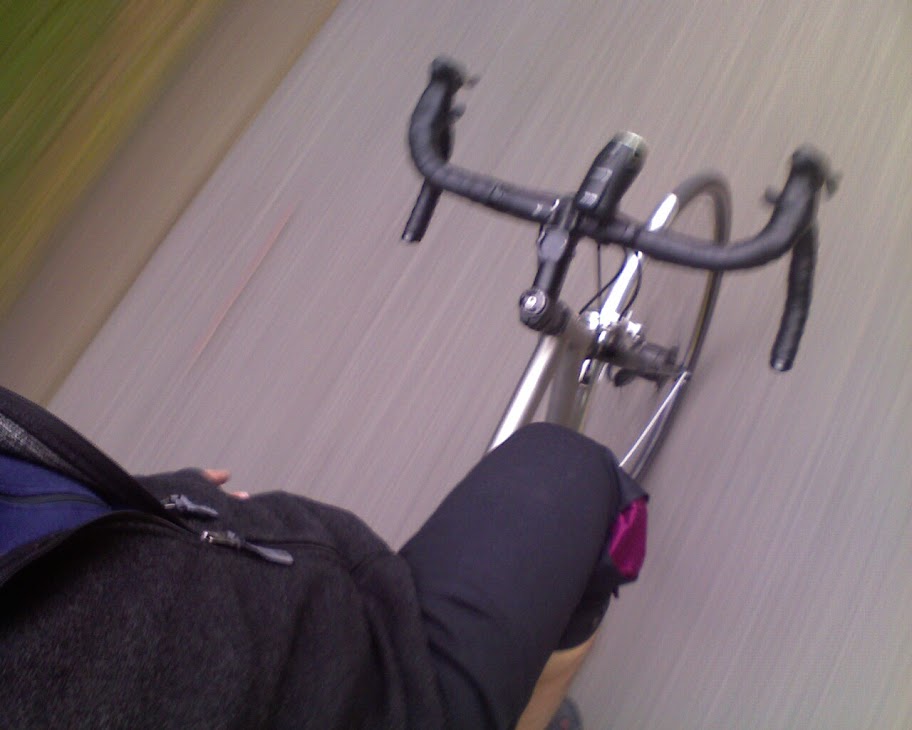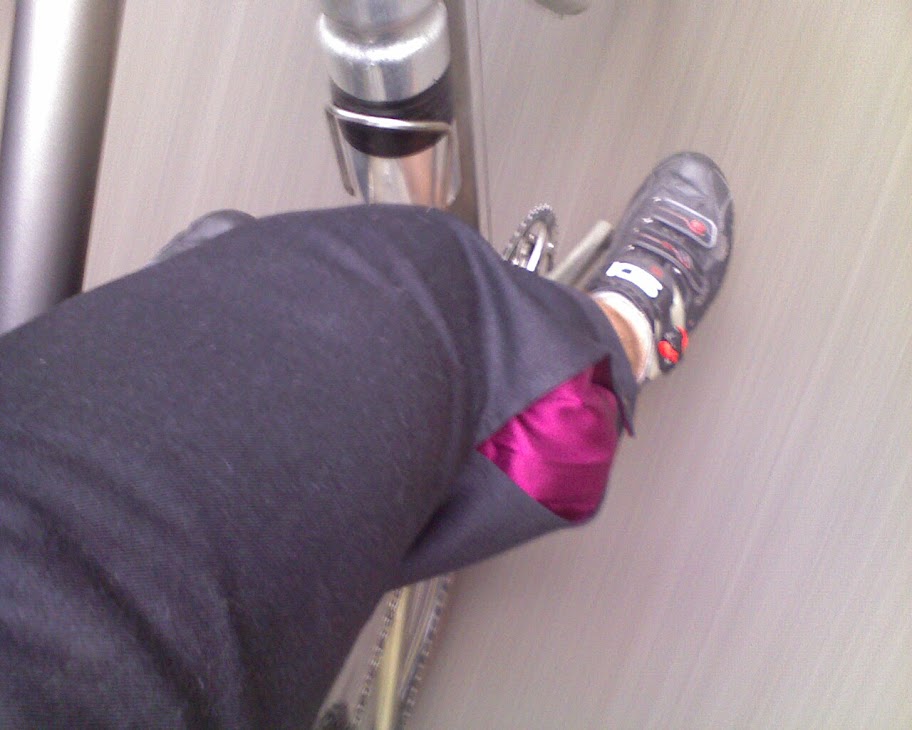For the most part I was happy with my 300k preparation, route, and equipment choices. Looking back I would opt not to carry the rain cape for a mid-summer ride and rely on an extra wool layer or my lightweight ‘breathable’ jacket. I was worried about cold rain and temperatures changing in the mountains. The waxed cotton cape came in handy for 10 minutes during the final push to the finish – but otherwise was a heavy choice as it rode on the front rack for 170+ miles.
Wool is my new wetsuit. I wore an Ibex jersey and carried a woolie base layer that came in very handy. I would have also worn my Ibex shorts – but I had a very bad seam issue on a previous 300k (seam + anatomy + 300k = pain pain pain). I am excited about the addition to the Ibex line of bib shorts – and hopefully I’ll get my hands on a pair to see how they perform. I’m hoping the bibs keep the seams playing nicely with my anatomy.
For the better part of the day the wool jersey did a perfect job of keeping my temperature balanced. I added arm warmers for a descent and wish I had brought my knee warmers – but even after repeated downpours the wool performed as advertised. I shouldn’t be surprised – I’ve been wearing wool gear since I moved to VT – and have never been let down – be it while sweating on the XCBC skis, the snowshoes, or winter runs. It was impressive to have a garment perform through 16+ hours on the bike in rain, clouds, rain, clouds – all while absorbing sweat and retaining a comfortable temperature. If I were to redesign the jersey I’d add a fine blended layer to the inside to cover the zipper @ the throat – as the feeling of metal annoyed me. I’d also play around with a stouter blend of fabric to reinforce the pockets. While I had no structural problems with the pockets they seemed to stretch out and hang lower and lower as the day went on. Near mile 120 it seemed my food stash and camera were bouncing off my saddle as the jersey stretched under the weight. After a gentle washing everything is back to normal…
I rigged the bike with my Carradice Barley (with a Bagman) and a Nitto Mark’s Rack. On the rack I rolled my rain cape and eventually my undershirt. I also used it for extra hydration – carrying a bottle of water when needed. The rack is overkill for a supported brevet – but I am planning to use the rack for some bike camping. In the Barley I had an extra Ibex woolie, a pair of lightweight hiking shorts, arm warmers, energy food (a bit too much), my ‘brevet’ purse with phone, ID, credit card, etc…, my glasses (I wore contacts all day), spare lenses for the Oakley’s, spare set of batteries, DanoLite, Petzl e-Light, spare bulbs for the E6s, zip ties, 2 tubes, patch kit, tire boot, ultralight first-aid kit, multi-tool, hex wrenches, tire irons, and Fiberfix spoke. On the bike I carried 2 water bottles (I have room for a third) and my Lezyne pump.
The stem held my VDO MC1.0+ computer and my cue sheet holder. The cue holder is made from a small sheet of thin plexiglass and a recycled Honjo fender strut. The strut is zip tied to the stem. I used some heat shrink tubing (Radio Shack) to keep the strut from scratching my bars and stem. My cue sheet lives in an Aloksak baggie, clipped in by 2 binder clips.

I didn’t have much time to test the Mark’s rack. With the relaxed geometry of the IF and the middle of the road trail on the fork the bike handled well. I encountered some shimmy no-handed while not pedaling as I approached speeds north of 26 mph. Tucking my knee to the top tube settled the bike. I couldn’t get a consistent repeat on the shimmy speed – some smooth roads induced no shimmy @ 28 mph, while rougher roads induced the shimmy at slightly lower speeds. The wind was variable throughout the day – and I’m sure this adds to the equation. Adding my E6s also seems to have added a place for drag to occur – and I noticed with the cape, rack, and lights the bike is a different beast than when it is naked. No complaints from me – I’m excited to get more gear up front for a fall S24O to the mountains.
I had a few sections of tummy trouble. Clif Bars and Luna Bars caused distress, Clif Shot Bloks and Sport Beans seemed to be neutral and worked fine so long as I could eat them. I really enjoyed the salty Mojo bar – I think I’ll be adding these as a staple. Poweraid is disgusting – I’ll avoid it at all costs. Ginger Ale is a staple for settling my stomach.
My rear end did fairly well. I swapped the Brooks Swallow for the B17 just a week before the ride. I’d had some minor irritation in street clothes on the Swallow and I knew the B17 was good for a century without a pad or bike specific shorts. I opted to wear my Pearl Izumi bibs at the last moment – they worked well and for the most part played nicely with my saddle. I used 2 applications of Lantiseptic – my new found magic potion. The only issue I had with the shorts is the seaming around the pad. I grew uncomfortable around the mile 170 mark and couldn’t slide around on the saddle as much as I liked. When I arrived at the finish a look in the mirror revealed what looked to be an iron on version of the pad – on my rear end. The very edges of the pad at the far end of my bottom were etched into my skin. I’d never had this problem before – previously I would get bruises on my sit bones or irritation between my thighs. I’m not sure what to make of it – perhaps the constant rain did me in… or I need to try a 300k in street clothes. It was painful for 2-3 days – but liberal applications of Bag Balm did the trick. I do not foresee it as a show stopper – but I’ll continue experimenting.
I ate:
2 Clif bars
2 Luna bars
1 Mojo bar
6 packs of Clif shots
4 packs of Sport Beans Jelly Beans
1 bag of salty potato chips
2 PBJ sandwiches
I drank:
12 large bottles of water
1 Canada Dry ginger ale
1 bottle of Powerade (disgusting!)
In all I had a great ride. I feel I prepared well mentally and would have loved to have had more time to focus on physical conditioning for climbing. It feels great to be back in the long distance saddle again… the ride was a huge confidence booster leading up to the D2R2 – and inspiring to plot and plan rides for this fall – and for 2009.









